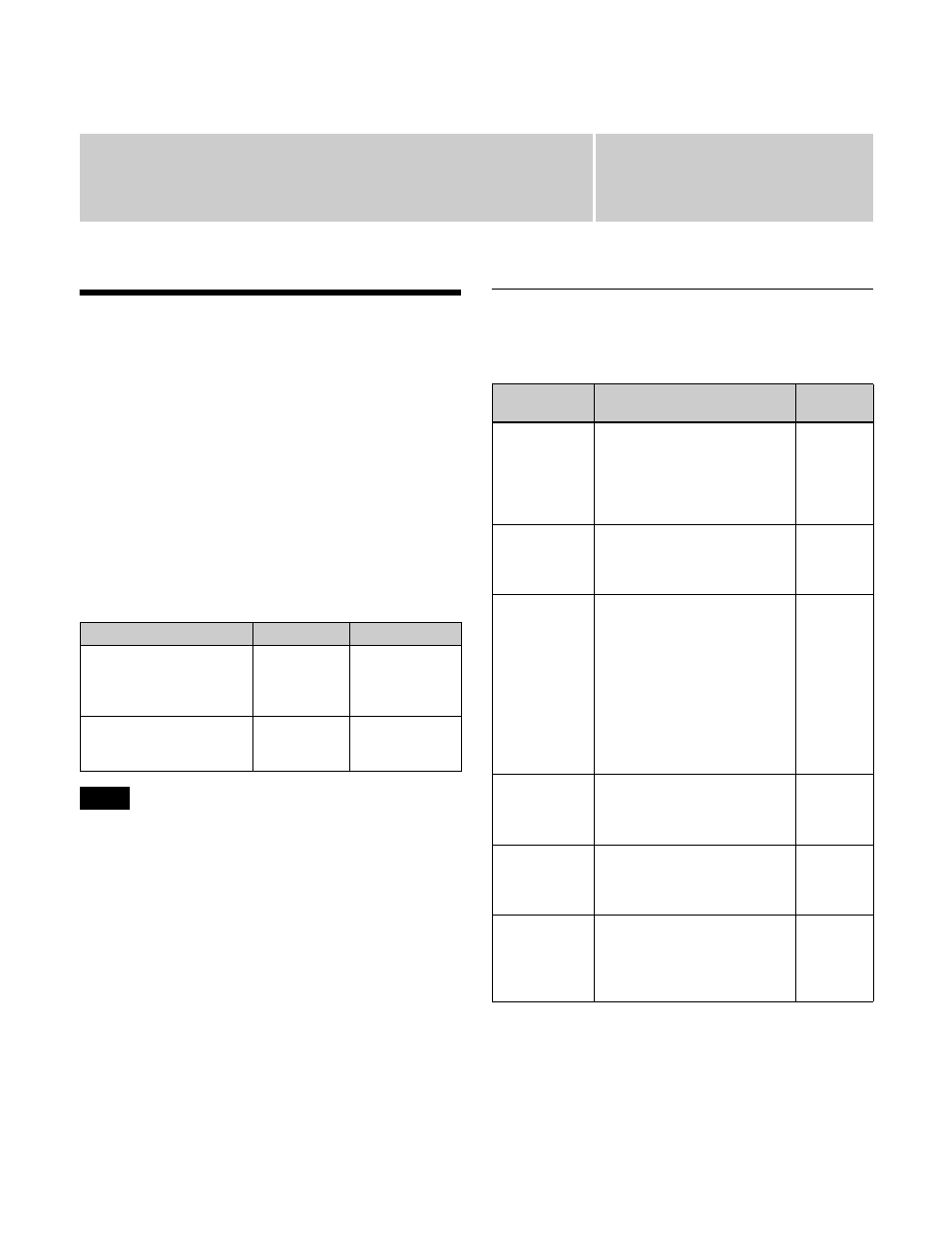Chapter 4 keys, Overview, Key types – Sony GP-X1EM Grip Extension User Manual
Page 108: Keys supported in 4k, Keys, Chapter

Chapter
4
108
Keys
Overview
A key is an effect in which a part of the background image
is replaced by an image or superimposed text. The signal
determining how the background is cut out is termed the
“key source,” and the signal that replaces the cut-out part
is termed the “key fill.” The system component
responsible for processing a key is referred to as a “keyer.”
Each M/E bank and the PGM/PST bank has eight keyers.
Keys supported in 4K format
The keys that can be used will vary depending on the Mix
Effect Boards which are installed.
The following keys can be used on each switcher bank.
On the XVS-6000, only the XKS-7210 can be installed.
The XKS-7215 is not supported.
Sub keys
On the XKS-8210/XKS-7210 Mix Effect Boards, key 3
and key 4 in 3840×2160P format are called “sub keys” due
to restrictions in their functionality.
For details about function restrictions of sub keys, see
“Sub key restrictions” (page 529).
For details about sub key settings, see “Setting the Sub
Key Mode” (page 444).
Key Types
The key type indicates the manner in which the key source
signal is used to cut out the background.
Clean mode
In a luminance key, linear key or color vector key, you can
enable clean mode. When clean mode is enabled, key fill
is added to the background without cutting out with key
source. This improves the keyed image quality, but means
that the part of the key fill signal which is not to be inserted
Mix Effect Board
3840×2160P
3840×2160PsF
XKS-8210 (for XVS-9000/
8000)
XKS-7210 (for XVS-7000/
6000)
Key 1 to key 4
Key 3 and key
4 are “sub
keys”
Key 1 and key 2
XKS-8215 (for XVS-9000/
8000)
XKS-7215 (for XVS-7000)
Key 1 to key 4 Key 1 and key 2
Note
Type
Description
Clean
mode
Luminance
key
The background is cut out
according to the luminance (Y)
of the key source signal, and at
the same time the key fill signal
is cut out and then added to
the background signal.
Supported
Linear key
This is a type of luminance key,
but there is a reduced
variability in gain, allowing
more precise adjustment.
Supported
Color vector
key
The key signal is created from
a combination of the
luminance and chrominance
components of the key source
signal. When perfect keying is
not possible with a luminance
key, this allows a key signal to
be created even if the
luminance level is low,
provided that the colors have
high saturation.
Supported
Chroma key
A key signal based on a
particular color is used to cut
out the background, and the
key fill is then inserted.
Not
supported
Wipe pattern
key
This uses the wipe pattern
selected for a transition to cut
out the background, and the
key fill is then inserted.
Not
supported
Key wipe
pattern key
This uses the wipe pattern
selected for an independent
key transition to cut out the
background, and the key fill is
then inserted.
Not
supported